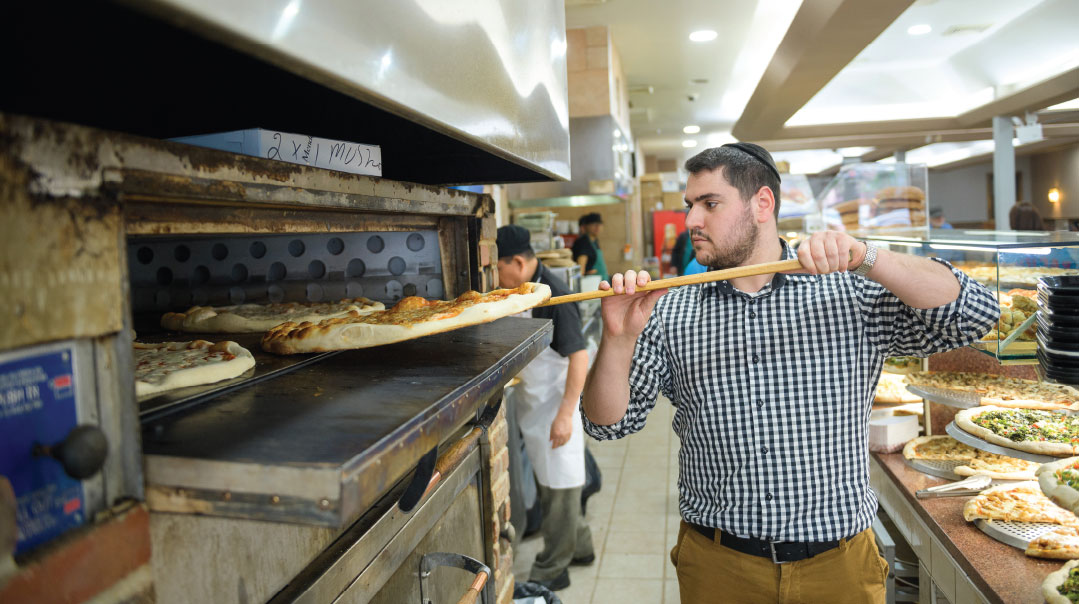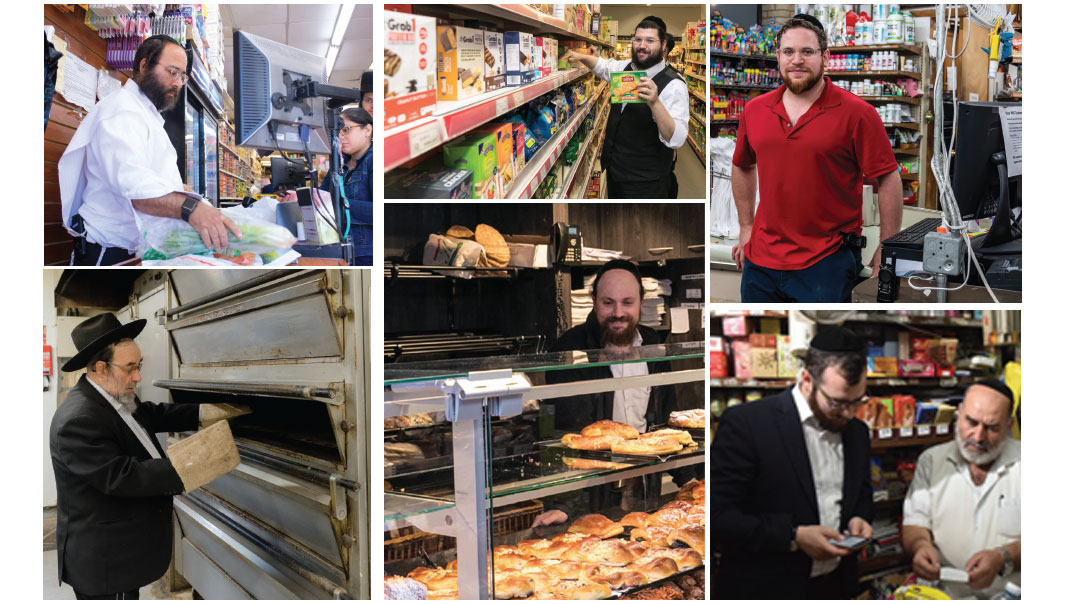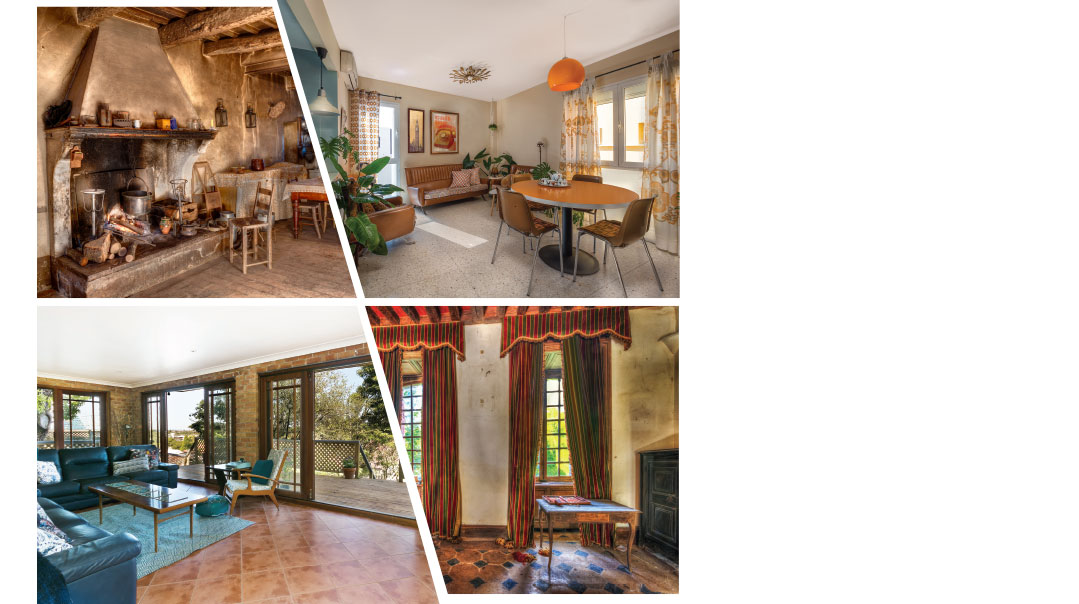Parents’ Perspective

Planning a chasunah should be done with a sense of gratitude, not a sense of entitlement.

The DIY Wedding
There are two schools of thought when it comes to weddings. Some people think, It’s just once in a lifetime; splash out as much as you can, while others think, It’s just one night; what for?
I’m of the second school.
I know that children are different these days, and I’m not sure I could pull it off again. But if I had more weddings to make, I’d like to make them exactly as I did in the past. I wouldn’t cut down on anything — because the only way I could cut down further would be to make the wedding on a Friday and serve the Friday night seudah as the wedding meal, as they did in the olden days. (I would love it if that came back in style....)
We’re not a family who borrows. I’d rather serve canned tuna on Shabbos than borrow money to buy fish, and that was what I did when I was younger. My husband is a respected kollel yungerman, while I worked as a teacher for many years. Baruch Hashem, we made ends meet and we made ten beautiful chasunahs in a happy, upbeat fashion, and we never went into debt.
When my eldest daughter got engaged around 25 years ago, my plan was to cook the entire wedding myself. The local kashrus authority asked us not to do this, because they were worried about what would happen to kashrus standards if others would follow our lead. Instead, we hired a cook whom they certified, bought the food, and served it ourselves.
The family was small then, and we held the wedding in a small hall. I went to the flower market the week of the wedding, bought fresh flowers, and made centerpieces, and we did without a flowered backdrop. We did consider hiring a kallah chair. It cost around $100. In those days, $100 was one-hundred-dollars. We didn’t live on much, and that meant real money. My daughter, the kallah, said, “Why waste the $100? I can sit on an ordinary chair.” And she did.
One lovely thing that did happen was that more people came to dance at her chasunah than at any other. We had to fold up the tables and chairs after the meal, to clear space for the dancing, and people came in droves. Everyone wanted to see what we’d done, and everyone came, stayed, and had a wonderful time. My daughter’s chasunah ended up being the talk of the town.
We took a cheap but capable keyboard player, who was just starting out, we had a family friend taking pictures, and at the dinner we had cousins taking snaps on each side of the mechitzah.
We’re lucky enough to live in a community with an excellent bridal gemach, so that was a help. We did have to buy sheitels, of course. As for make-up, my girls took a makeup lesson with an excellent local beautician while they were engaged, and she gave them a list of what to buy, as well as teaching them technique. They did their own faces on the day, which saved a lot of money.
We took a small hall, which was a way of broadcasting from the outset that our crowd would be small and that casual acquaintances should not be insulted. I printed small, warm notes to put inside the invitations, explaining that we would like to invite our guests for the dinner, but were cutting down. No one was offended.
And while our system worked very well for our remaining children — with some tweaks and allowances for the growing family — the kashrus authority didn’t have much to worry about, because no one actually stepped forward to copy our great idea!
D.B., London, UK
Shalom Above All
When I became a kallah, my father a”h dreamed of being a trailblazer who’d implement creative innovations that would save time and money and benefit the tzibbur. However, my in-laws were more comfortable with a standard wedding. My then-chassan consulted with his rebbi, Rav Pam ztz”l, who advised us to go ahead with a standard yet modest wedding.
My parents, both Holocaust survivors, were strong advocates of modesty and frugality. “Live beneath your means” was their mantra. They disdained fussiness about material things. To them, simplicity was good taste. “The décor, and menu at your wedding should be invisible,” they said. “No one should notice or talk about what was served at your wedding or how it was presented.” The focus of the wedding should be simchah and gratitude. Nothing else.
It followed naturally that all of my siblings made simple and modest weddings. None of us got hysterical about menus, décor, or wardrobes. But we still kept in mind that other lesson from my parents: If the mechutanim desired it, we upgraded beyond the standard that we considered necessary. Although we were taught that ostentation is a waste of money, we were also taught that shalom takes precedence.
For our first few weddings, we rented silk flower arrangements from the Nshei Ahavas Chesed. I was happy to support such a worthy cause and I thought that the flowers were lovely. Some of my mechutanim, however, preferred other flower arrangements, and we were happy to comply.
When I look back at the chasunahs that we have been zocheh to make, I don’t think that I would have done anything differently. I do regret the time and tension that we spent on seating cards. Despite the effort we put in, there were inevitable awkward mix-ups. I recently found out that one of my mechutanim was seated at the children’s table. I am glad that I was not told about it at the time. My sister just made a wedding without seating cards and it worked out beautifully.
Nowadays there is a whole genre of promotions geared to baalei simchah. “For that special day you must have…”, “The event that you deserve…”, “For this once-in-a lifetime occasion, only the best will do.” That whole theme song sounds discordant to me. Planning a chasunah should be done with a sense of gratitude, not a sense of entitlement.
Esther Reisman, Brooklyn, NY
Don’t Keep Them in the Dark
When it comes to wedding expenses, I think the level of trauma for parents is related to how strictly they controlled the sweet cupboard when the kids were small. If children are used to freely taking treats, where will they find the self-control not to demand whatever they wish for the most special day of their lives?
Every family has a budget and when it comes to weddings (and to some extent, bar and bas mitzvahs too), the ability to negotiate a simchah that it is affordable for the parents and brings joy to the “stars of the show” has its roots in years of family dynamics.
A key element is making sure that the chassan and kallah have a clear idea of just what their parents can and cannot afford. If they’ve been kept in the dark all their childhood, it can be shocking and dismaying to find out that their wedding won’t match up to their dreams. We have always lived with a limited budget and have included children in discussing choices for shopping and family trips — including money restraints. As they became adults, they found ways to save and even earn money so that they could have the luxuries they deemed necessary.
When it came time to discuss their chasunahs, they were realistic, practical, and understanding of our options. Now as young couples, they are aware of the financial issues of their siblings and sometimes help each other out or tell us, the parents, if someone needs some help.
D.P., Brooklyn, NY
Cut and Paste
For my first four children, we followed the trend and made both a l’chayim and a vort. When the same people showed up for both parties all four times, I realized that having two separate parties was really a waste. So the next time around, I decided to combine the two events into one. That was one lesson learned.
All of our children had “takanah weddings.” Of course, I’d be flexible if the other side wanted more — but we were fortunate in that our mechutanim are similar families with similar values.
One place where I think it does pay to spend money is on the teenage family members. I’ve seen firsthand the benefits of renting nicer gowns and hiring make-up artists and hair stylists for our daughters and teenage granddaughters. Weddings are a time when our children should shine. Spending money on our children is more important than spending money on bathroom baskets. The chasunah is the ultimate simchah of perpetuating our mesorah among the next generation. The wedding is about the children, not about our pocketbooks. When we keep this in mind, we can make overall wiser decisions.
S.S., Far Rockaway, NY
More or Less
I live in Gateshead and our weddings here are comparatively simple. Our sons, however, didn’t marry local girls. For our London wedding, which was considered a simple wedding by London standards, we paid thousands and thousands of pounds for one day. I don’t know what else could have been cut without embarrassing the young couple and families by being very different from the norm, yet I felt so uncomfortable spending so much on one night.
Looking back on my biggest dilemmas, I would say the common denominator was the inevitable clash between our budgetary constraints and the real emotions of the human beings affected. I still haven’t found a magic solution to navigate between the two, and I suspect that many others share the same angst.
From what I’ve seen, the whole “matching” culture causes endless work and expense. In large families there may be very different ideas among siblings about what’s considered appealing, with neither able to give in. One sibling can only accept black-and-white boys’ tuxedo sets, another wants pink shirts and light trousers, which is normal and cute to them, and they’re embarrassed to dress their toddler boys in black trousers. At the same time, their cousins know their friends will laugh at them if they wear pink shirts. Sometimes the differences can be bridged with good will, but not always. When it comes to girls, the problems are compounded when there are different standards of tzniyus. And very often, that kind of friction stems from a real desire to bring joy to the kallah who wants her nieces and nephews to wear matching.
My approach: it’s not worth upsetting a kallah who wants all the little people in matching gowns, and if you can make it work, you should try to do so.
If I were making a wedding again, I think I’d be more careful to invite older people, especially my children’s former teachers. When I was immersed in all those rows of numbers, I kept trying to cut the invitation list. But in retrospect, the extra expense may have been justified to avoid hurting people who expected an invitation. There’s a basis for all those “must-invites,” and convention is there for a reason.
If only we could make it all add up.
D.K., Gateshead UK
You’re Invited
Let me admit it up front. I have negius.
I have a 21-year old daughter (a kallah, baruch Hashem!), an 18-year-old daughter, a 22-year-old son and an 11-year-old son. With a little siyata d’Shmaya I am facing the happy prospect of making four simchahs over the course of two years… pooh pooh… and the daunting prospect of having to pay all the bills. So I have been thinking about creative ways of cost-cutting… but I’m not shooting for the stars. Tafasata merubah.
The chassidim can pull off major takanos. In fact, one of the major chassidic courts recently started an initiative called “Shleimasa Chedvasa” to cut costs. We know these words from the famous Seudas Shlishis zemiros: “Askinu seudasa d’meheiminusa... shleimasa chedvasa d’malka kadisha.”
But, by the way, while the takanah is a cute play on these words, the way the song breaks up the words seems wrong. The words mean: Askinu seudasa d’meheiminusa shleimasa — we have prepared a meal of complete emunah. Chedvasa d’malka kadisha — the rejoicing of the Holy King. The words shleimasa is the end of one sentence and chedvasa is the beginning of the next. But I digress….
Since I do not belong to a chassidic court, I am not swinging for the fences; a bunt single is just fine.
My focus is invitations. The cost of printing and sending out one batch of the average simchah invitation, especially with the rising cost of stamps, is over two thousand dollars. And do you know why the cost of stamps is going up? Because no one is using them anymore. So I wonder, why pray tell, are we still sending paper invitations?
On every level, email is better. It’s cheaper. It’s easier to track. It saves tons of time and it does not get “lost in the mail.” The secular world has largely gotten rid of snail-mail invitations, so what are we waiting for?
I know what you will say. Not everyone has email. Maybe, but their wives have email… I’m positive.
Ah, I can hear it now. You are taking away parnassah from the invitation makers. True. But you are saving much more Yiddishe gelt for the rest of Klal Yisrael. To compare: The halachah of hasagas g’vul, which protects the rights of a proprietor by limiting competition in close proximity, is rarely applied practically. Why? Because Chazal are very pro-consumer, and competition brings down prices. We accord more weight to the public’s benefit than to the harm caused to an individual.
(I know. There is a small percentage of people that still send checks back with the return envelope. There must be some easy fix for that problem. A wedding registry? A PayPal account in the email? Or how about adding “BYOE — bring your own envelope” to the email?)
You’re still not convinced; I know why. Admit it. Email’s not “classy”; snail mail, for some reason, is.
Well, I then appeal, in all seriousness, to the trendsetters — in modern parlance, the “influencers.” Because the bottom line is that for any solution to be effective, a “trickle down” effect must be put in place.
Noblesse oblige. If those who can, don’t, then those who can’t, won’t. Because by refraining from indulging in what you easily can, you will be in effect giving tzedakah to those who cannot.
It will be the best money you never spent.
Rabbi Avrohom Neuberger, Monsey, NY
(Originally featured in Mishpacha, Issue 773)
Oops! We could not locate your form.








Comments (0)